The pioneering dairy farmer keeping calves with their mothers
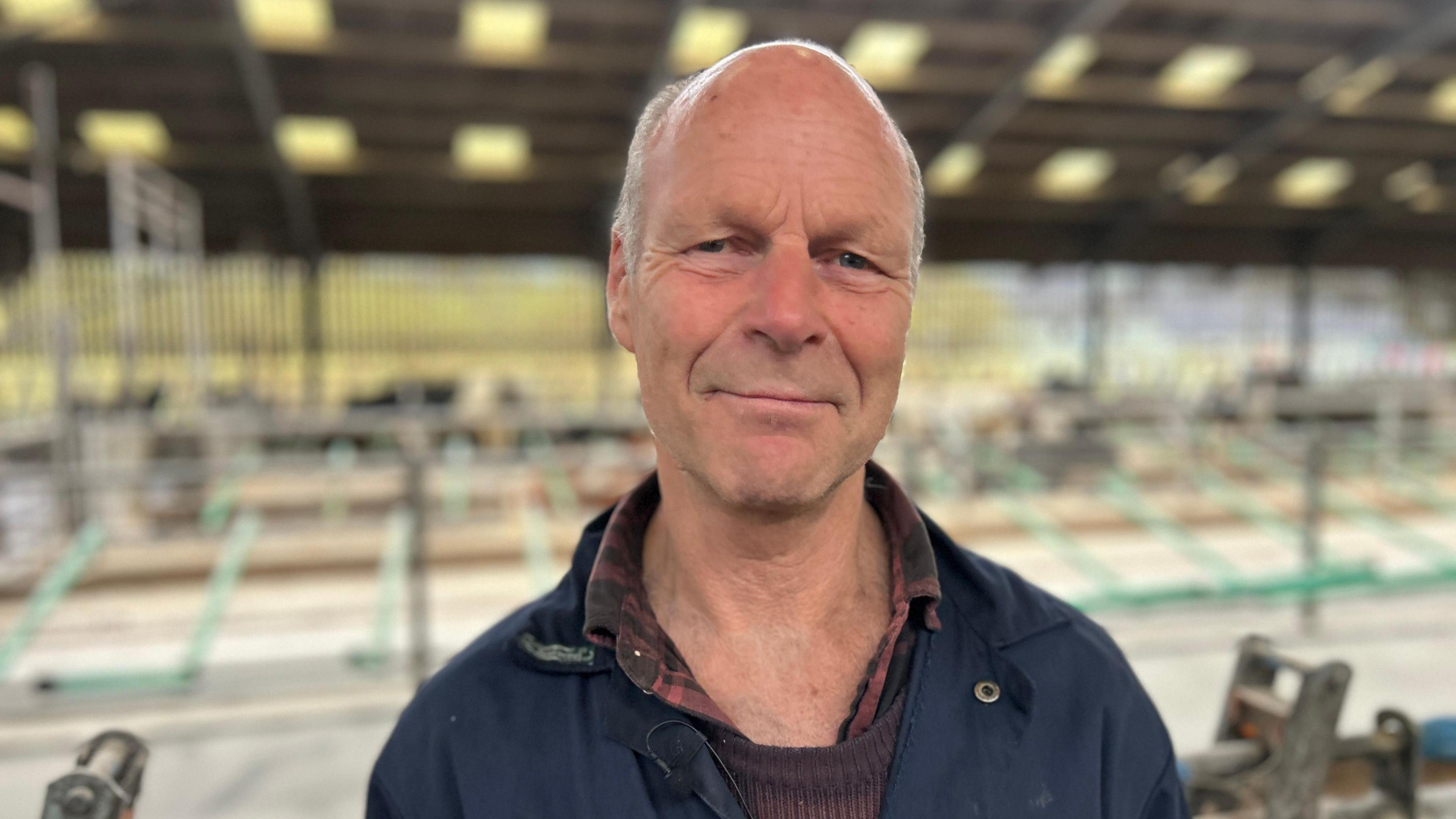
David Finlay has been pioneering the cow-with calf dairying system
- Published
At most, traditional dairy farms calves are separated from their mothers within 24 hours of their birth.
It allows farmers to collect the milk that the calves would naturally drink and sell it to be made into dairy products.
But one farmer in the south of Scotland is pioneering an unconventional method of commercial dairy farming - keeping cow and calf together for about six months.
David Finlay, who farms 130 dairy cows near Gatehouse of Fleet, claims the system results in higher animal welfare standards and a more profitable business.
Now he is calling for the Scottish government to fund a radical new cow-with-calf development programme.
However, some farmers believe Mr Finlay's system is not viable for many in the industry.
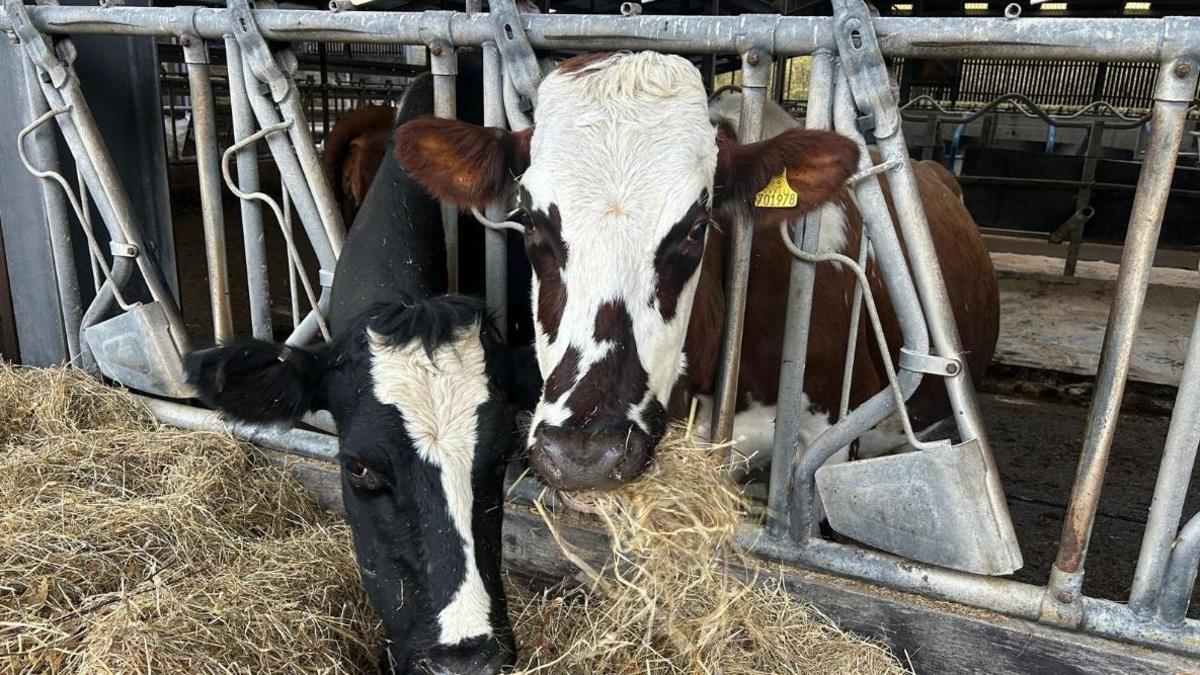
David Finlay runs a herd of 130 cows at Rainton
Mr Finlay and his late wife Wilma decided to explore the cow-with-calf dairy system at Rainton Farm in 2012.
Mrs Finlay, who did not come from a dairy farming background, could not understand why the mothers and newborns were separated.
The unconventional new method had only been trialled on small-scale farms in places like the Netherlands.
Mr Finlay said: "Basically, it's leaving the calves with their own mothers instead of for less than a few hours, it's now leaving them for five to six months.
"And we're trying to see if we can harness the natural health and productivity of a system where it is more natural for the cows and calves."
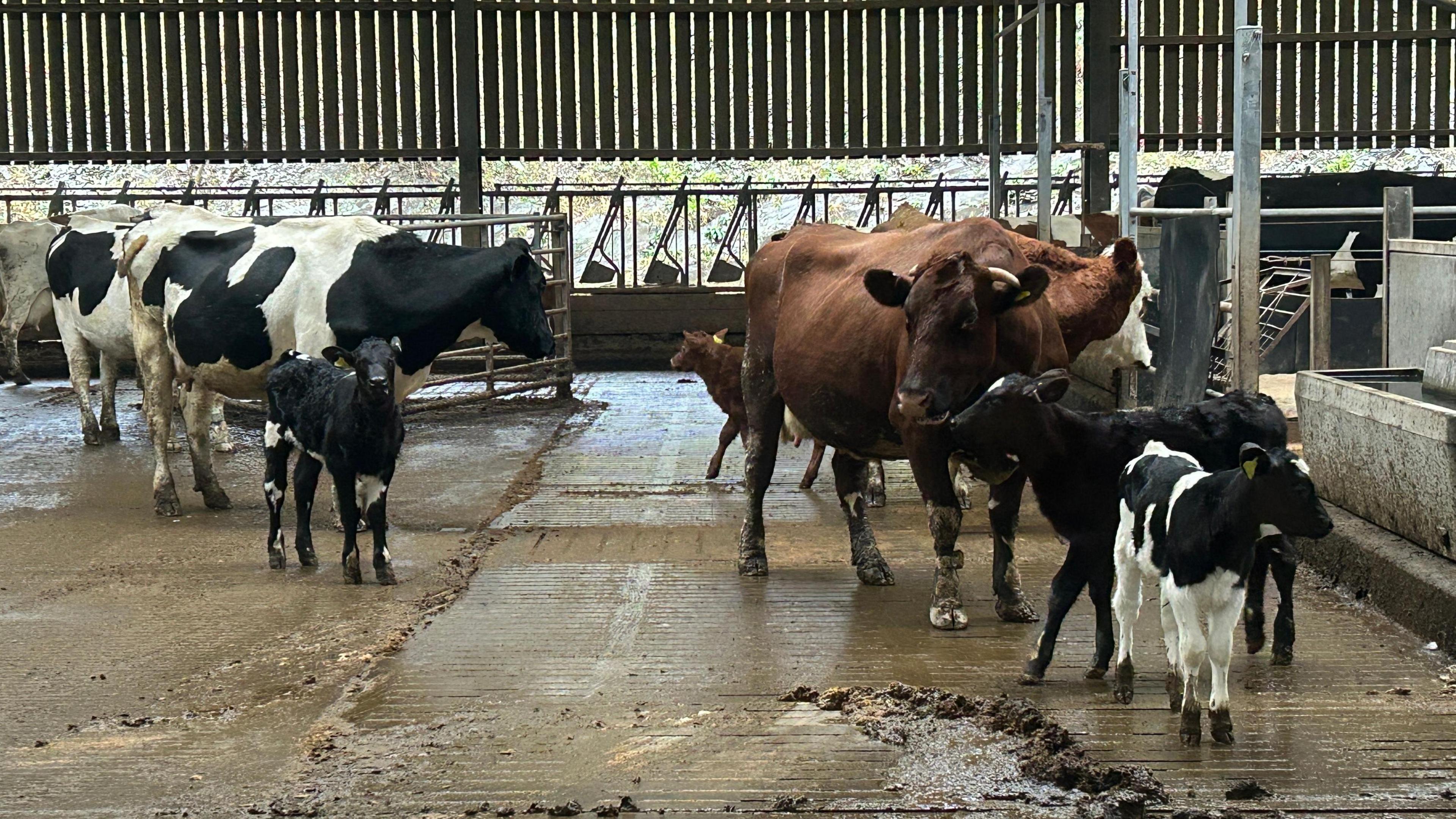
Cows and their calves are kept together for about five to six months at Rainton
The Finlays implemented the cow-with-calf system with their herd, but the decision almost bankrupted the business when they did not have enough milk left to sell to market.
After overhauling their business plan and adopting a new approach, the couple found a way of making the system financially viable.
David claims that among the benefits are happier cows and staff, healthier animals and an increase in life-expectancy.
"What we've found is we can carry 25% more cows on the farm, because the young stock are growing and maturing so much faster and the cows are yielding 25% more milk," he said.
"So even with the calves drinking a third of their mother's milk, the system is actually more efficient, more productive and more profitable."
The calves do not take all their mother's milk, so cows can still provide milk for market while they are with their young.
Rainton Farm is now the largest commercial cow-with-calf dairy farm in Europe.

Scotland's agriculture minister Jim Fairlie says the government is committed to supporting high animal welfare
Mr Finlay is asking the Scottish government for a multi-million pound funding commitment, to match the EU's research on system economics, environmental and animal welfare impacts.
Agriculture Minister Jim Fairlie said the government is committed to high animal welfare standards and has previously committed to trialling cow-with-calf research projects.
"I will always encourage those in the sector to look for innovative approaches to farming that push Scotland to be a global leader in sustainable and regenerative agriculture," he said.
"For this reason the adoption and use of sustainable and regenerative agricultural practices is one of the key objectives of the Agriculture and Rural Communities (Scotland) Act 2024 and it is great to see progressive businesses taking the initiative and adopting these practices already."
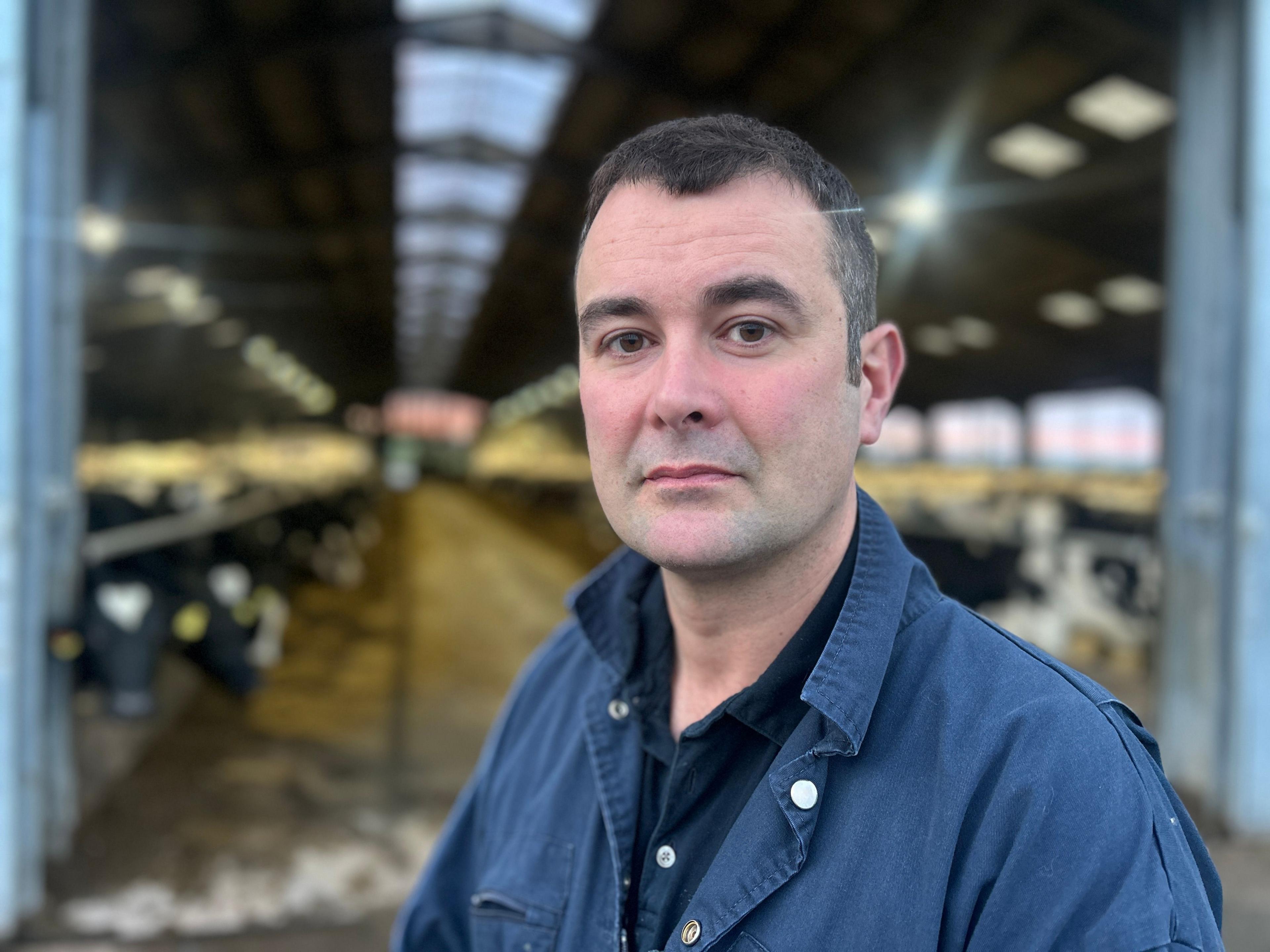
David McMiken from Ernespie farm does not believe the system is suitable for most dairy farms
Dairy farming is big business in south-west Scotland, with Dumfries and Galloway home to almost half of Scotland's dairy herds.
However, the Finlays have their fair share of sceptics and critics.
David McMiken, a third generation dairy farmer who runs 300 cows on his farm at Ernespie near Castle Douglas, said he would welcome more investment into the dairy industry as a whole but the cow-with-calf system was unlikely to be widely adopted.
"Ultimately this system is a more expensive way to produce milk," he said.
"It comes with increased labour costs, increased feed costs, and unfortunately that's not viable in a lot of farms.
"Using a conventional set-up, we also have independent disease control between the mothers and calves.
"Scotland has some of the highest welfare regulations in the world and we're very proud of the sector that we've built."
Mr McMiken said it could be argued that separating cows and their calves after five to six months could be even more stressful for the animals, as they have had time to developed a maternal bond.
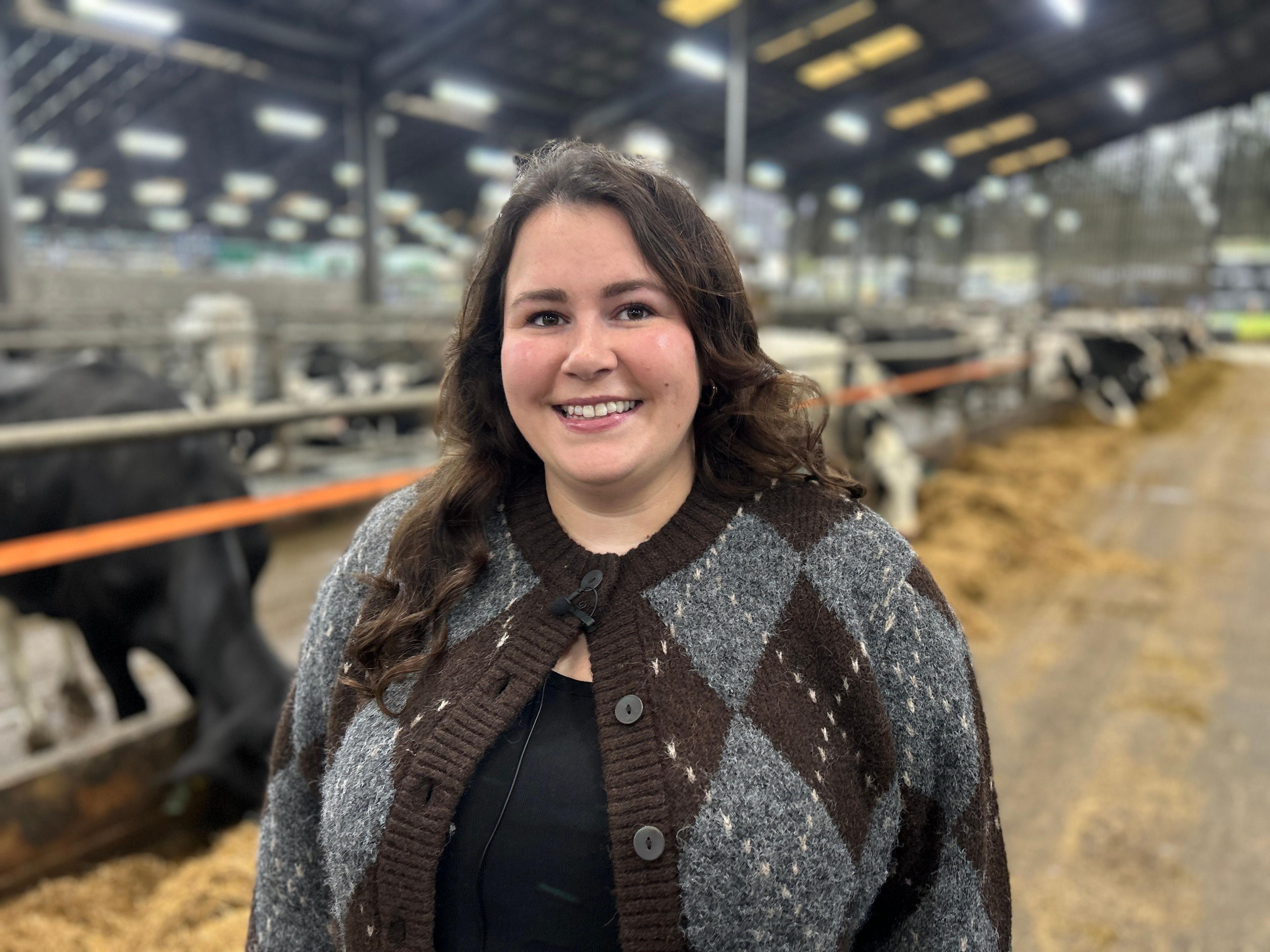
SRUC is part of a European research programme looking at cow-with-calf systems
Mr Finlay was recently awarded an Honorary Fellowship by Scotland's Rural College (SRUC), for his commitment to innovation, sustainability and education.
The college is part of an EU's Transform Dairy Net project, which is bringing together 26 partners and 11 farmer-led innovation hubs to study cow-with-calf systems.
Dr Holly Ferguson, a precision dairying scientist with SRUC, said: "People are beginning to question more whether it's a system they could run and are getting a bit more interested in the challenges and the pitfalls.
"People like David pioneering this system and helping farmers understand what works and what doesn't are really useful and it's what we need - more people to create that blueprint that would let people take up cow-with-calf systems in the UK."

Wilma Finlay was an integral part of the pioneering project
The Finlay's journey from traditional dairy farming to pioneers of this radical new system has been captured on film and made into the award-winning documentary A Dairy Story by Dumfries filmmaker Ian Findlay.
The film has been made more poignant as Mrs Finlay died with cancer in March 2025.
Mr Finlay said he struggles with the fact that his wife is not around to see the success of the documentary, or the continued success of the system she helped to develop.
He said: "It's tragic. It's such a shame. But the fact that we have a viable system that works as a business and we have found a way to farm that is better for our animals and our staff is testament to Wilma."
Related topics
- Published22 October
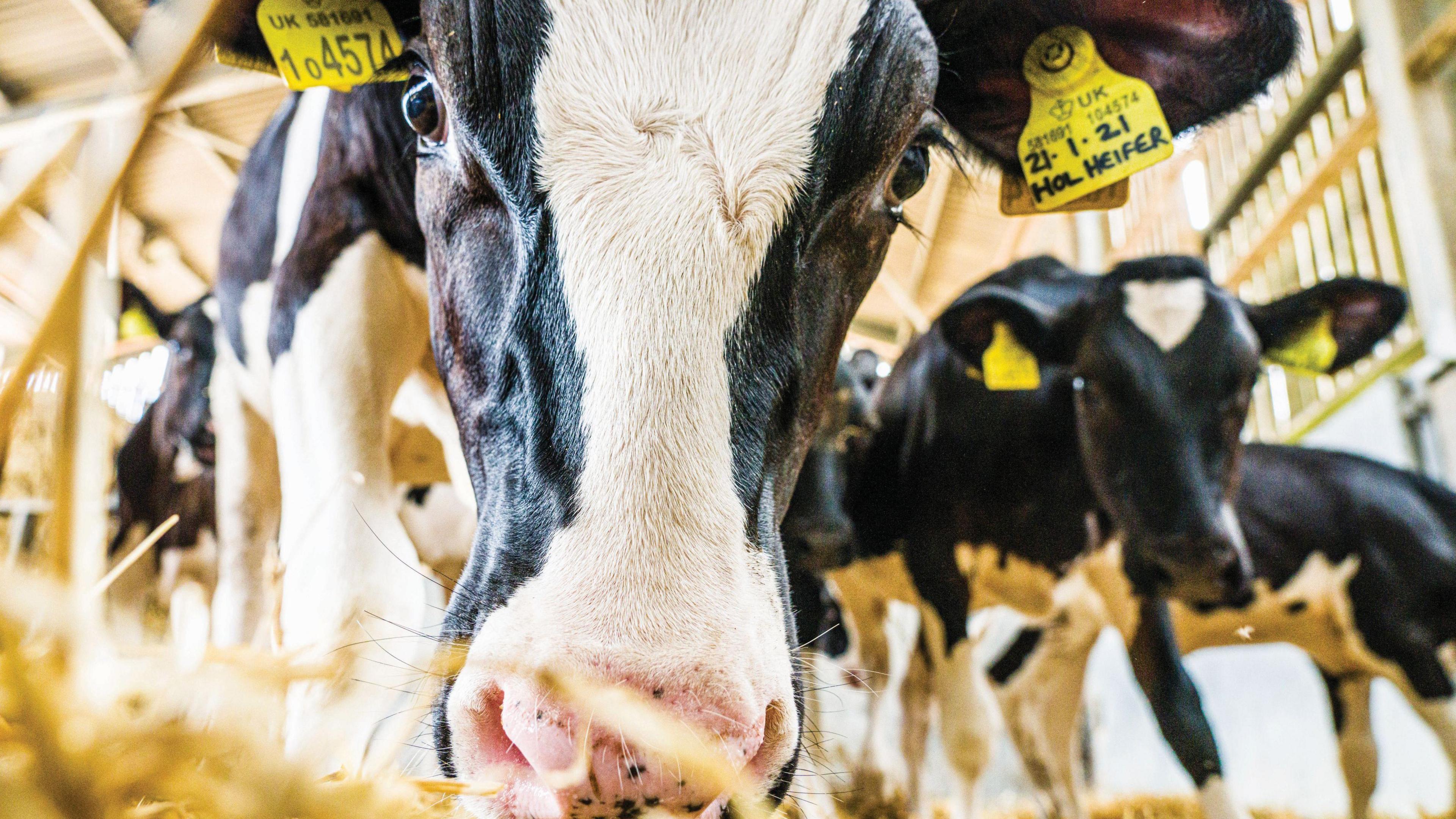
- Published10 October
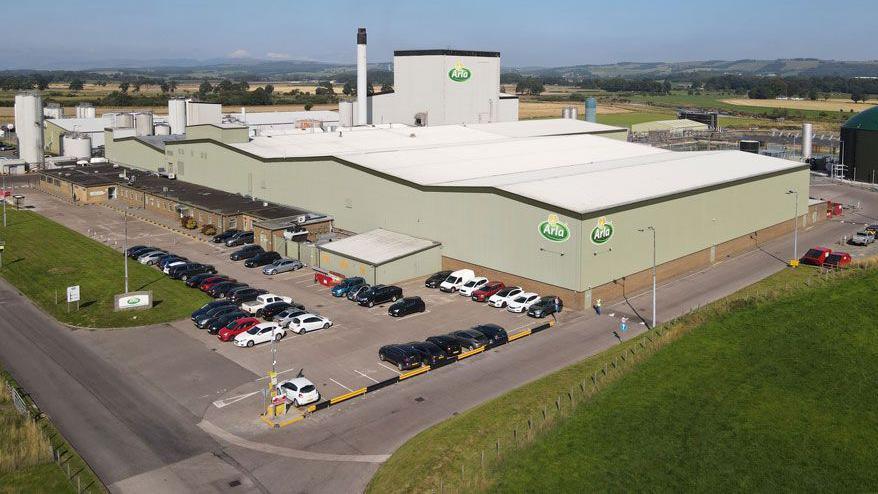
- Published3 April
